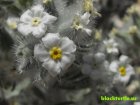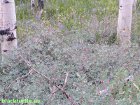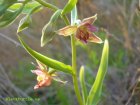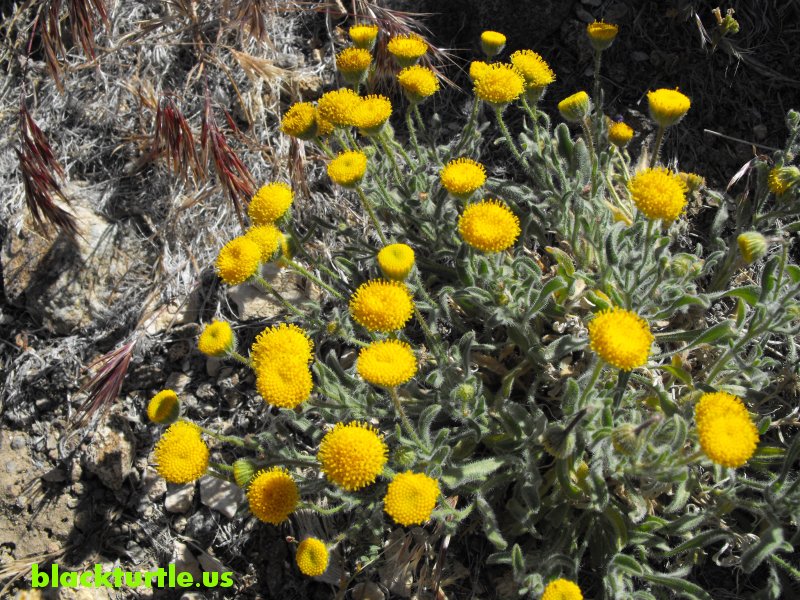
|
Golden Buttons
January/February
Golden buttons is a low-growing member of the Sunflower Family. It is
sometimes referred to using the common names fleabane or rayless daisy. It's
fairly common throughout Death Valley at elevations above 4500 feet. It also
blooms throughout the summer and so if you're visiting the higher parts of
Death Valley this summer you're most likely going to see some golden buttons
scattered around here and there.
(Click here for more info!)
|
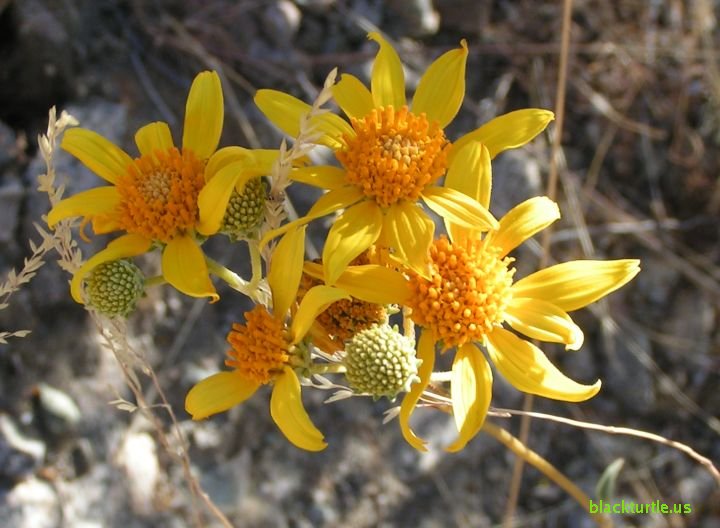
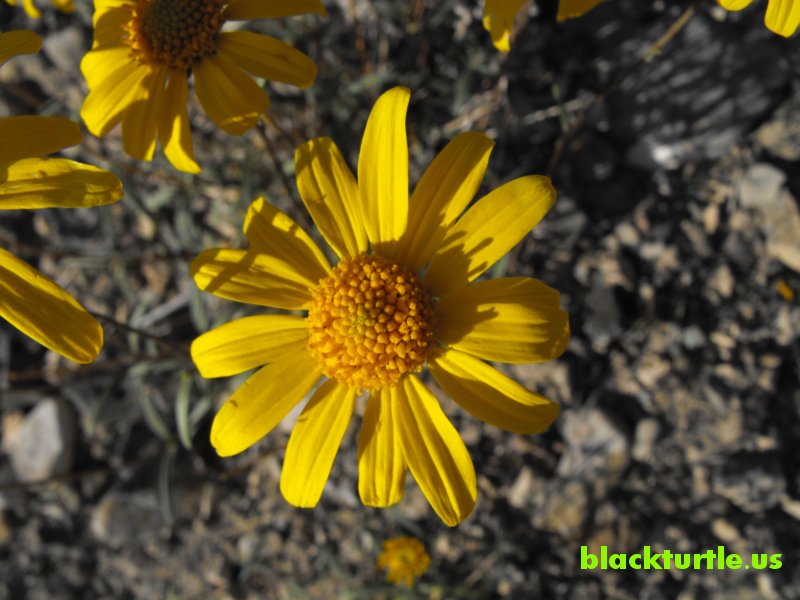
|
Goldeneye
March/April
Despite the similarity between the common names, Death Valley Goldeneye
(Bahiopsis reticulata) and Nevada Goldeneye (Heliomeris multiflora) belong
to different genera as you can see from their scientific names. While both
are members of the Sunflower Family (Asteraceae), they aren't as closely
related as their common names suggest. Sure the flower heads look quite
similar, but other than that the plants are quite different. For instance
the leaves of Nevada Goldeneye are linear and relatively small, whereas the
leaves of Death Valley Goldeneye are quite broad. Interestingly, the
scientific name of Death Valley Goldeneye was recently changed. Formerly it
was Viguiera reticulata.
MORE INFO:
Death Valley Goldeneye
Nevada Goldeneye
|
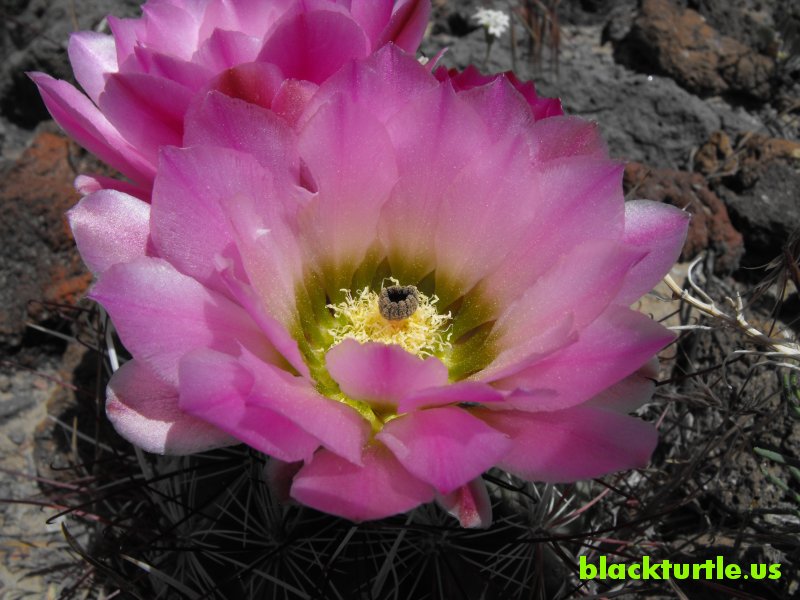
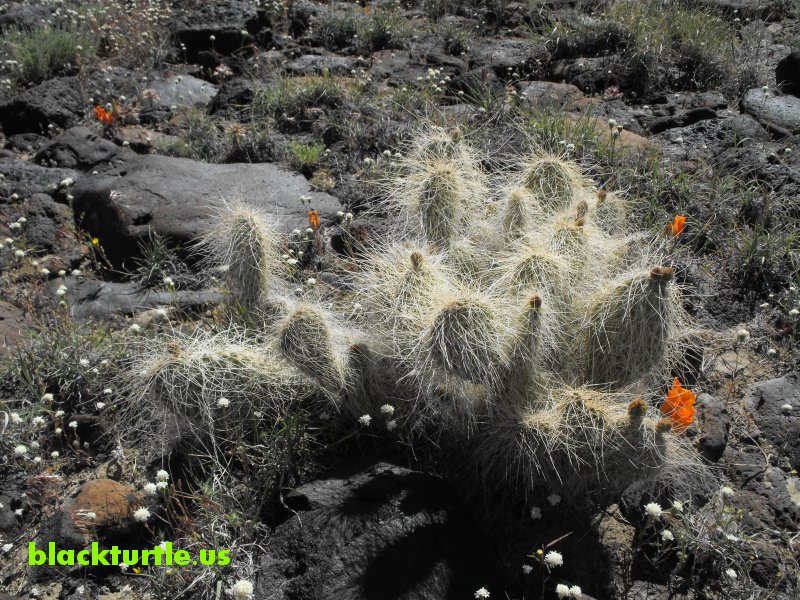
|
Fishhook Cactus and Old Man Cactus
May/June
Two new cactuses were added to my online collection of plants this last
week. One was the fishhook cactus and the other was the old man cactus. Both
are interesting cacti, but while creating the information pages to go with
these plants, I found out that the scientific name for old man cactus had
been recently changed. Formerly known as Opuntia erinaceae ursina, old man
cactus is now known as Opuntia polyacantha along with three other varieties
of prickly pear cactus that had previously been regarded as separate.
Further, it turns out that chollas are no longer included in the Opuntia
genus and now are listed as Cylindropuntia.
MORE INFO:
Fishhook Cactus
Old Man Cactus
|
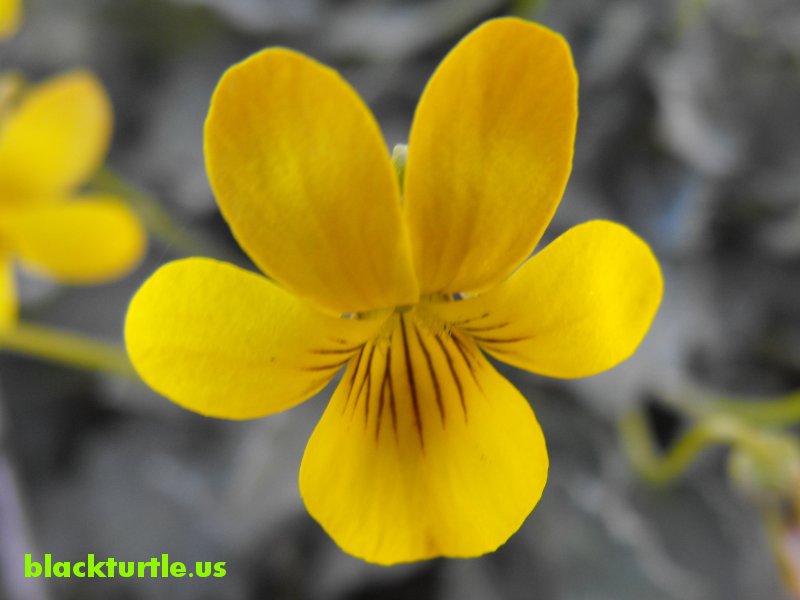
|
Hunter Mountain Yellow Violets
July/August
It may sound rather contradictory, but there is a species of violet that is
actually yellow! In fact, the yellow violet (Viola purpurea) can be found in
abundance around Hunter Mountain. They bloom from April to June and are
reputed to be found throughout the Great Basin region. I ran into quite a
few of these plants on a recent hike up Hunter Mountain. The hike up Hunter
Mountain is short (about a half mile) and doesn't involve much elevation
gain (about 400 feet), but it provides a fantastic view of Saline Valley and
a good view of the entire region!
(Click here for more info!)
|
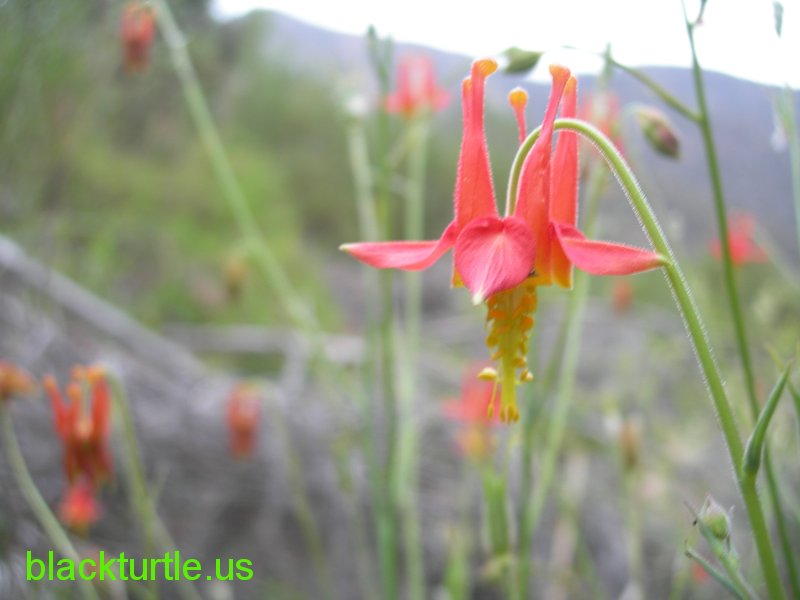
|
Columbine
September/October
Many people wouldn't expect to find columbine growing in Death Valley
National Park, but at higher elevations it is likely to find niches
where it can thrive, providing that there is adequate water. The
columbine plant shown in the picture to the left was located in
Surprise Canyon near Thompson Camp. The elevation of the site was
probably just slightly under 7000 feet. The plant was growing
right next to a large cistern located at the mouth of Water
Canyon (which is essentially a side canyon of Surprise
Canyon that takes off to the northeast just above Thompson Camp).
(Click here for more info!)
|
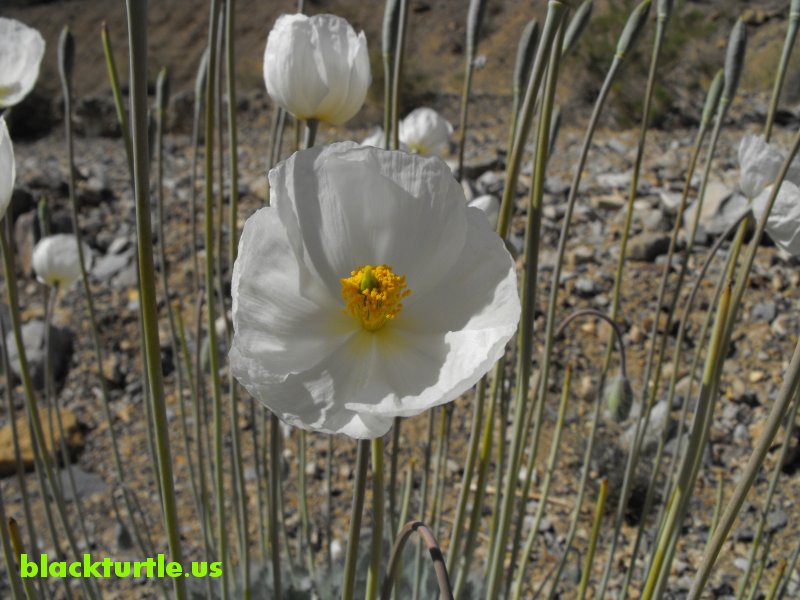
|
White Bear Poppy
November/December
The hike for this week took me to
Corridor Canyon and included the
completion of a goal I've had for a couple years to locate and photograph a
bear poppy plant. Needless to say, I was ecstatic when I first laid eyes on
the first of five
white bear poppy plants that I encountered on this hike. The
plant is quite striking in appearance. The leaves, the flower pods, the seed
pods, and the flowers are all distinctive and extraordinary in many ways.
|
| 
